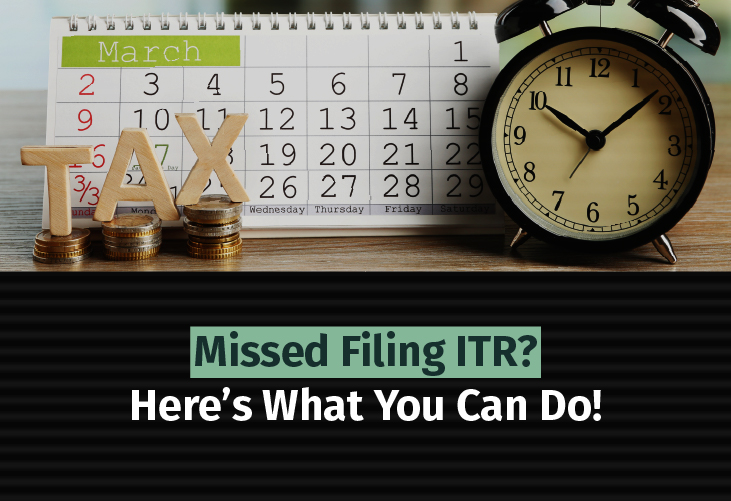ITR filing seems complicated especially when you have income from capital gains. However, with a clear understanding of the rules and types of capital gains, you can accurately file your return and maximise tax-saving opportunities. This guide will help you report capital gains correctly and explore tax planning strategies as per the Income Tax Act.
What Are Capital Gains?
Capital gains refer to the profit earned from selling assets such as:
- Real estate (land, houses, etc.)
- Stocks or mutual funds
- Gold, jewellery, and other valuables
- Bonds or financial instruments
Capital gains are classified into two categories based on the holding period:
Short-Term Capital Gains (STCG):
A) Holding Period
Equity shares or Equity-Oriented Mutual Funds or units of Business Trust: if these assets are held for less than 12 months.
Other Assets: If these assets are held for less than 24 months.
B) Taxability
The Finance Act, 2024 has increased the tax rates on the short-term capital gains which is effective from July 23, 2024:
- Listed Equity shares or Equity-Oriented Mutual Funds or units of Business Trust: The tax rate has been increased +from 15% to 20%.
- Other assets: STCG is added to your total income and taxed as per your income tax slab.
Long-Term Capital Gains (LTCG):
A) Holding Period
- Equity shares or Equity-Oriented Mutual Funds or units of Business Trust: If these assets are held for more than 12 months.
- Other Assets: If these assets are held for more than 24 months.
B) Taxability
The Finance Act, 2024 has provided tax relief to individuals on their long-term future investments and removed the Indexation benefit, which is effective from July 23, 2024:
- Listed Equity shares or Equity-Oriented Mutual Funds or Units of Business Trust: The exemption limit has been increased from ₹1 lakh to ₹1.25 lakh and the tax rate has been increased from 10% to 12.5%.
Other assets: The tax rate has been reduced from 20% to 12.5%.
- However, the Income Tax authorities have provided relief to real estate owners by offering the option to pay 20% tax along with the benefit of indexation, applicable to owners who purchased real estate prior to the amendment date.
Step-by-Step Process
- Identify the type of Capital Gain: Classify your gain as short-term or long-term based on the holding period of the asset as mentioned above.
- Compute the Gains or Losses: Selling Price – (Cost of Acquisition (including brokerage or transfer fees) + Cost of Improvement + Sale Related Expenses).
- Report Capital Gains in the Correct ITR Form:
- ITR-2: For individuals with capital gains but no income from a business or profession.
- ITR-3: For individuals with capital gains & income from a business or profession.
- Use Exemptions to Reduce Capital Gains Tax
There are a few exemptions available to reduce capital gains, such as:
- Section 54: If you sell your residential property and proceeds from long-term capital gain are invested in another residential property within the specified time, then the amount of capital gain or amount invested, whichever is lower, shall be exempted.Note: The maximum amount of deduction will be ₹10 Cr.
Example: Capital Gain: ₹15 Cr, Cost of new house: ₹15 Cr, then gain ₹10 Cr shall be exempted.
- Section 54F: All the conditions to claim deduction under this section are same except that the capital gain should be from the transfer of assets other than residential property.
- Section 54EC: If you invest the long-term capital gains from the sale of immovable property in specific bonds (e.g., NHAI, REC, or other bonds specified by the central government) within six months. Then exemption is available up to a maximum amount of Rs.50 lakh.
- Carry Forward Your Losses: If you incur a loss on the sale of a capital asset, you can set off these losses against capital gains in the same year. However, it is to be noted that long-term capital losses can be set-off against long-term capital gains and short term capital losses can be set-off against long term and short term capital gains. If the losses are not fully utilised, you can carry them forward for up to eight years to offset against future capital gains.
- Fill Schedules CG: It is used to report capital gains from the sale of capital assets like shares, bonds, land & buildings, precious metals, etc., or Virtual Digital Assets (VDAs) like cryptocurrencies, Bitcoins, etc.
Following details are required to be filed in the Schedule:
- Type of asset (short-term or long-term)
- Sale consideration
- Cost of acquisition
- Date of acquisition
- Date of transfer
- Computation of capital gains
Note: Capital gains from the redemption of following assets are required to be reported under Schedule CG:
- Gold Bonds: Gains from the redemption of Gold Bonds are treated as capital gains.
- Unit Linked Insurance Plans (ULIPs): Gains from the redemption of ULIPs before completion of the lock-in period are treated as capital gain.
- Fill and Verify Your ITR
Common Mistakes to Avoid
- Incorrect Classification: Ensure accurate classification of gains as short-term or long-term based on the holding period.
- Misreporting Inherited Assets: When selling inherited assets, use the previous owner’s holding period to calculate long-term capital gains.
- Exceeding Exemption Limits: Report gains exceeding ₹10 crore accurately, as these are taxable under Sections 54 and 54F.
- Omitting Small Gains: Report all capital gains, even small ones, to avoid penalties.
- Ignoring Losses: Set off capital losses against gains to maximise tax savings. If losses exceed gains, carry them forward them to future years.
- Confusing Sale Proceeds and Actual Gains: Ensure reported amounts reflect actual gains after deducting the cost of acquisition and associated expenses, not just sale proceeds.
- Relying on Estimates: Avoid using estimated values for purchase costs or sale prices, always use actual documented amounts.
- Neglecting to Review Changes in Tax Law: Stay informed about the latest tax regulations, as changes can lead to misreporting and missed opportunities for deductions.
- Not Consulting a Tax Advisor: For complex transactions or significant gains, professional advice is essential to avoid costly mistakes.
Conclusion
Accurately reporting capital gains in your ITR is not just about following rules, it’s a smart way to manage your finances. By understanding how to categorise your assets, calculate your gains or losses, and take advantage of available exemptions, you can lower your tax burden.
Staying informed about the current tax rules will empower you to make better financial choices. A qualified financial advisor can help you in reporting the capital gains correctly. To optimise your taxes, download the 1 Finance app and book a consultation with a qualified financial advisor for a seamless, hassle-free tax planning experience.







